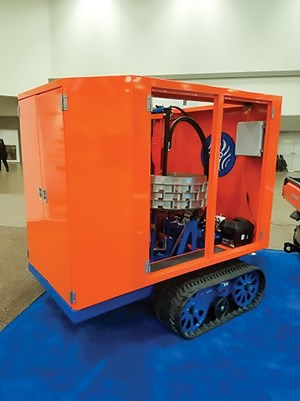What's new in exploration
The U.S. Bureau of Ocean Energy Management (BOEM) released a draft programmatic environmental impact statement (PEIS), which recommends stronger protections for marine mammals and environments in the Gulf of Mexico from potential impacts of oil and gas geophysical surveys. As in, stop oil people from scaring marine life with loud seismic air-gun bubbles! Told ya so. They also want to talk about interference from gravity surveys. What? Is the Earth changing shape an issue in the ocean? This may not end well. However, in spite of court interventions, public ignorance and endless regulation, some folks have moved ahead.
Apache scores a new Tcf or two inside the Republic of Texas (September 2016). Their modest 350,000 acres in the Permian/Delaware basins, called Alpine High, is guessed to be about 3 Bbbl of oil and 75 Tcf of gas in-place. Apache also guesses that, to get an economic windfall here, they will drill about 2,000 to 3,000 wells. That should help the U.S. rig count. Who said exploration is dead? I did, and in this case I was wrong. Again, right under the feet of many dehydrated cattle and windblown farms. Actually, they have been hard at it over the past three years, while the rest of the world was laying off and some were laying down. A tip of the hat to you folks.
New regulations. BSEE actually wants to help production, while the rest of the Obama group might not [New Offshore Rules, April 2016]. Exploration is still active in the Gulf, with at least eight U.S. programs. New BSEE rules are now moving from the exploration side of BOP concerns to focus on risers. We know about regulations on deep sea bolts. Existing subsea pipelines are next. Concern exists on abandonment of older floaters, but the government wants possible extensions of P&A, if we can find reserves reachable by those existing floaters. While the light shines on rusting facilities, this could be a decent time to work on new exploration technologies, to work in the presence of marine infrastructures.
Caelus announced a major Alaskan discovery in state waters west of Prudhoe Bay, at Smith Bay. Sidewall coring in two wells shows reservoir-quality marine sandstones containing light oil, ranging from 40-45° API gravity. They estimate 6 Bbbl to 10 Bbbl of oil in-place. Wells show up to 1,000 ft of gross pay. Let’s hope that EPA allows them to use TAPS to avoid environmentally restrictive regulations on pipeline construction, such that resulted in the Valdez ship wreck. Caelus claims that state tax credit programs enabled their exploration efforts. So, perhaps we can get along with some government.
BHP is not dead, either. They announced a discovery in the Gulf of Mexico’s Green Canyon Block 564. The real news is that they estimate adding this discovery to their portfolio will result in overall operational costs of about $10/boe. Further to their plan is over $2 billion in brownfield programs. They tell shareholders, optimistically, that IRR will average 45%.
Oil is also being explored in wonderfully exotic places like Senegal, Algeria, the Sea of Okhotsk, the Pemex side of the Gulf, and the Norwegian North Sea. I see a gas discovery, maybe commercial, in Morocco. I have always wanted to find something there within those dramatic offshore structures. “It's believed that 22% of the world's undiscovered oil and natural gas reserves are within the Arctic Circle,” said another industry publication recently. Would it matter, if I believed there existed, say, 100% more than that?
SEG convention. The SEG annual convention this year was better than a funeral, but not by much. There are a lot of hard-working folks who keep trying to keep our industry alive. Attendance was, as you would expect, mood-same. The Chinese had the same number of booths, but some seemed larger to me. One large service company booth was only about 10 × 4 ft. A significant number of papers were from Chinese authors, some of which were impressive. Who said U.S. schools were not turning out solid grads? Chinese science folks are learning that there is more to our industry than just being the low-cost provider. Some software was very advanced and not machine language-limited.
A highlight for me was seeing advancements from a few companies. SHEARWATERGEO picked up Dolphin’s assets and is going at it to revive marine seismic and high-end new data. GTI was showcasing a new robot geophone buggy, the Automator V3, which is much better than the earlier prototype I mentioned last year.
Technology advancements. The V3 is navigated by GPS. The system stops on a precise location, then presses the geo-node into the ground, pushing the 10 × 1.5-in. probe 6 in. into the soil, placing it “true vertical” with self-leveling aid from digital accelerometers. This part is actually a bigger deal than the manpower saved when compared to the normal “throw it” or “stomp it” deployment of geophones. Good data are the only goal of the client. The Automator is engineered to be “full-duty cycle” in extreme environments, to operate from the Arctic, to the sand seas of North Africa and the Middle East. It won’t survive an RPG, but you won’t be paying off kidnappers, either. Maybe things are getting better. ![]()

- Applying ultra-deep LWD resistivity technology successfully in a SAGD operation (May 2019)
- Adoption of wireless intelligent completions advances (May 2019)
- Majors double down as takeaway crunch eases (April 2019)
- What’s new in well logging and formation evaluation (April 2019)
- Qualification of a 20,000-psi subsea BOP: A collaborative approach (February 2019)
- ConocoPhillips’ Greg Leveille sees rapid trajectory of technical advancement continuing (February 2019)



